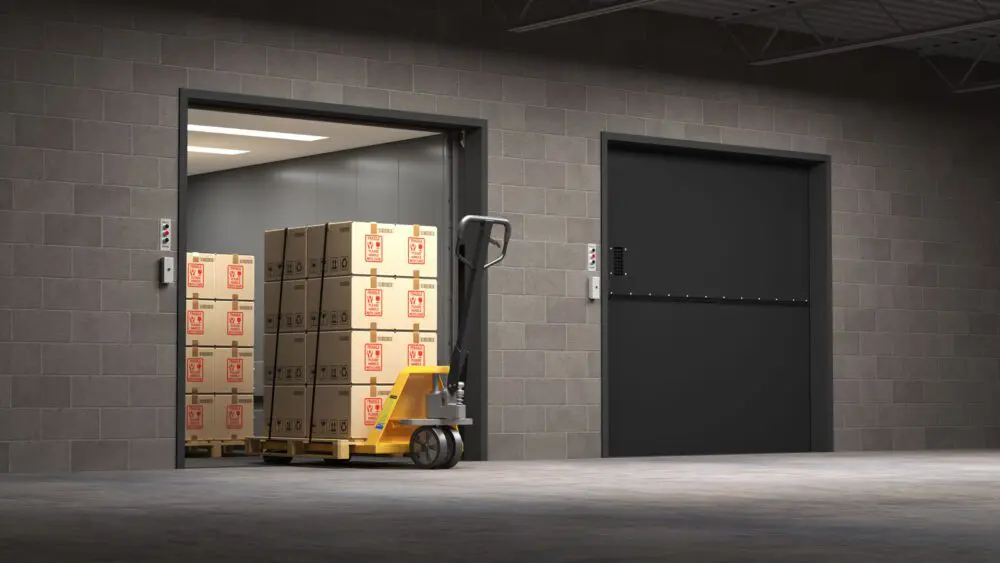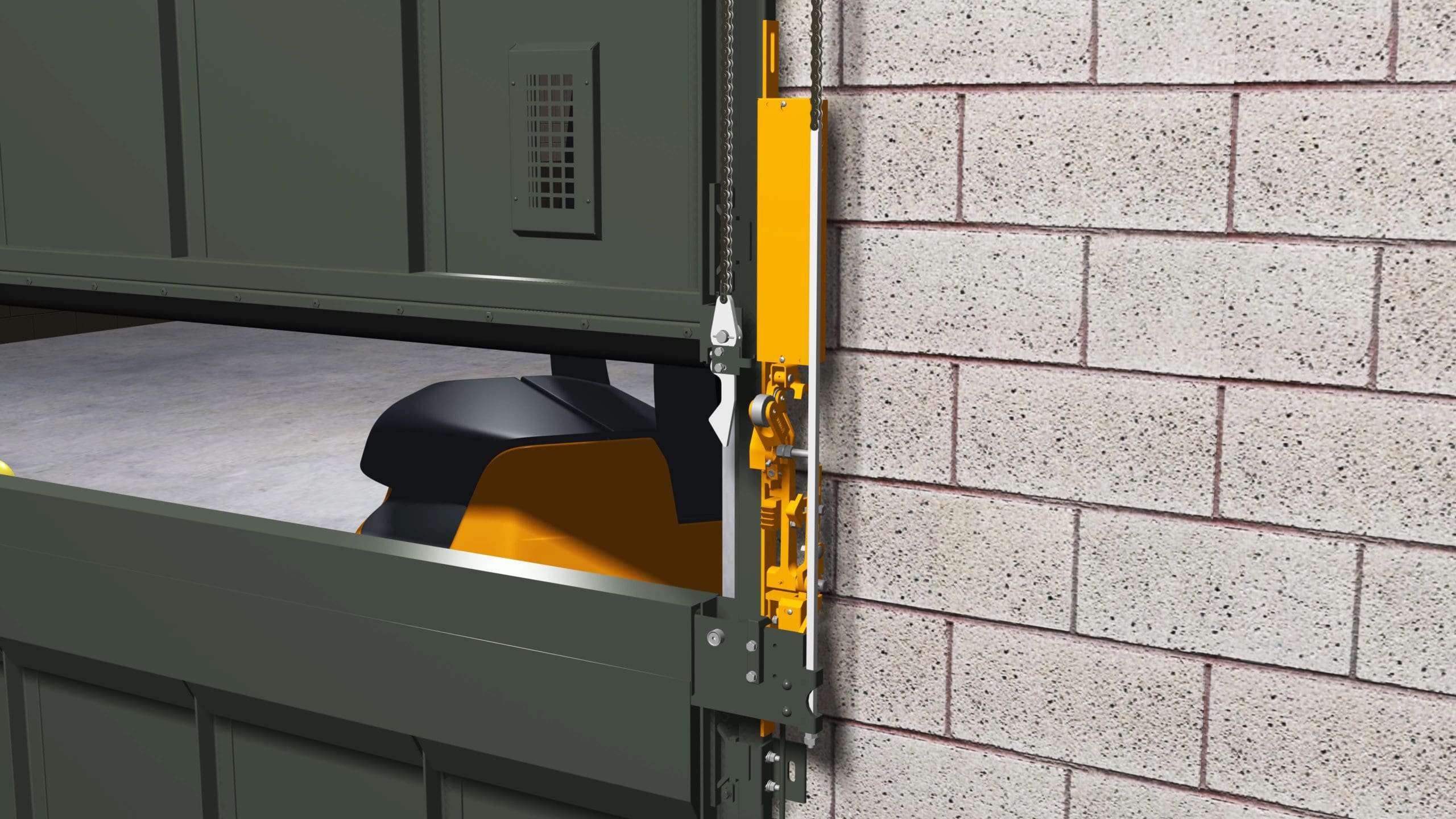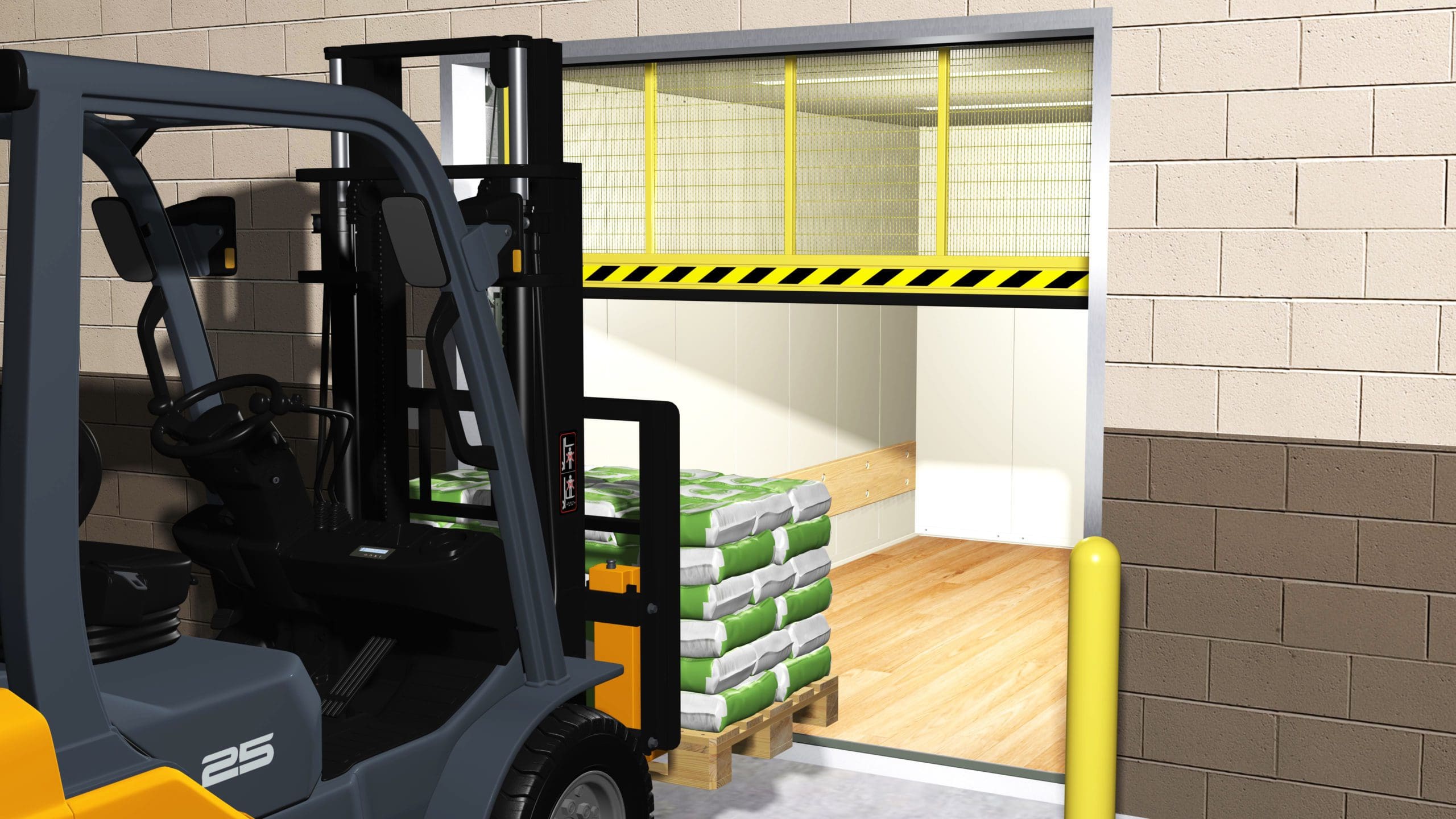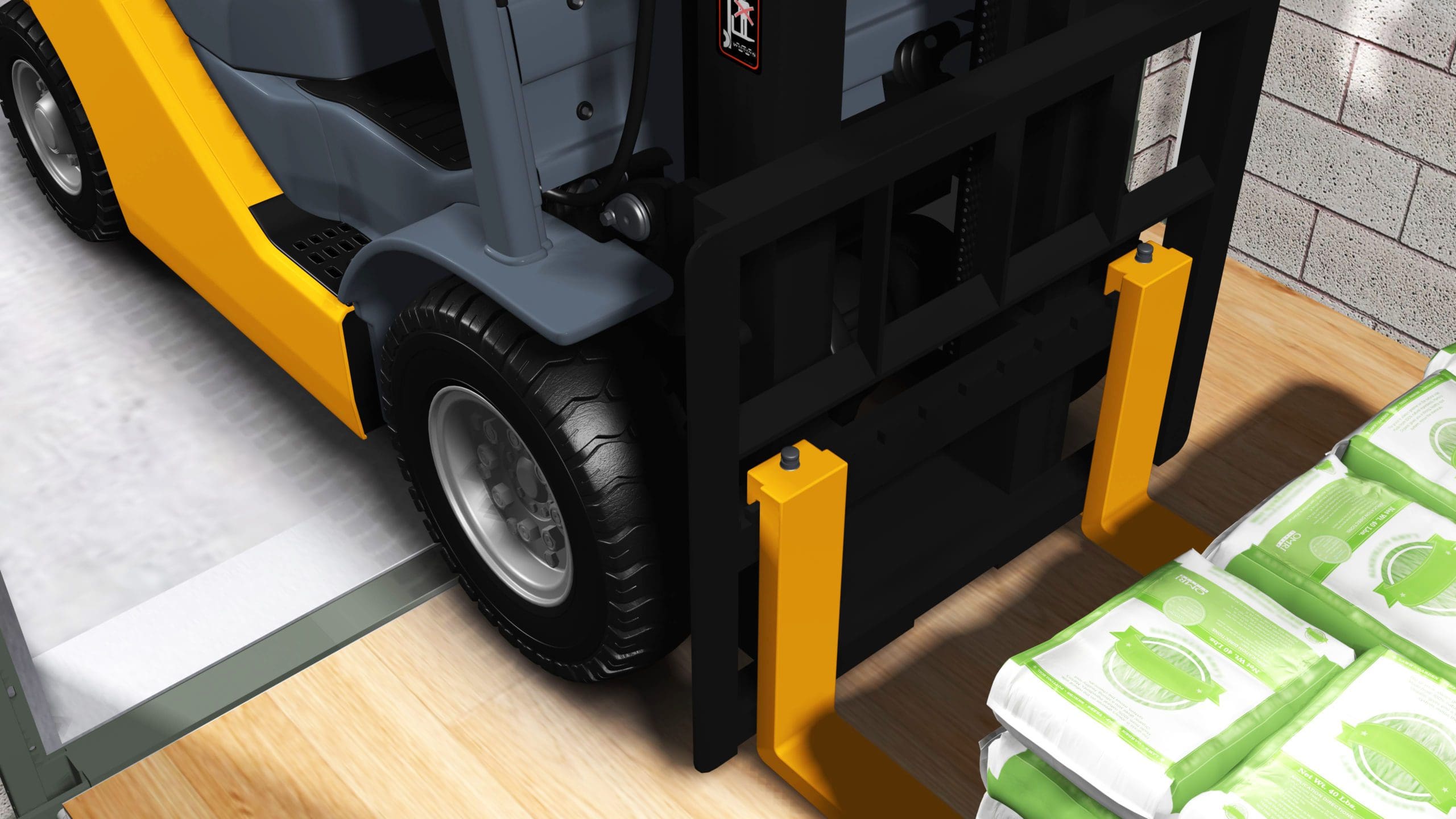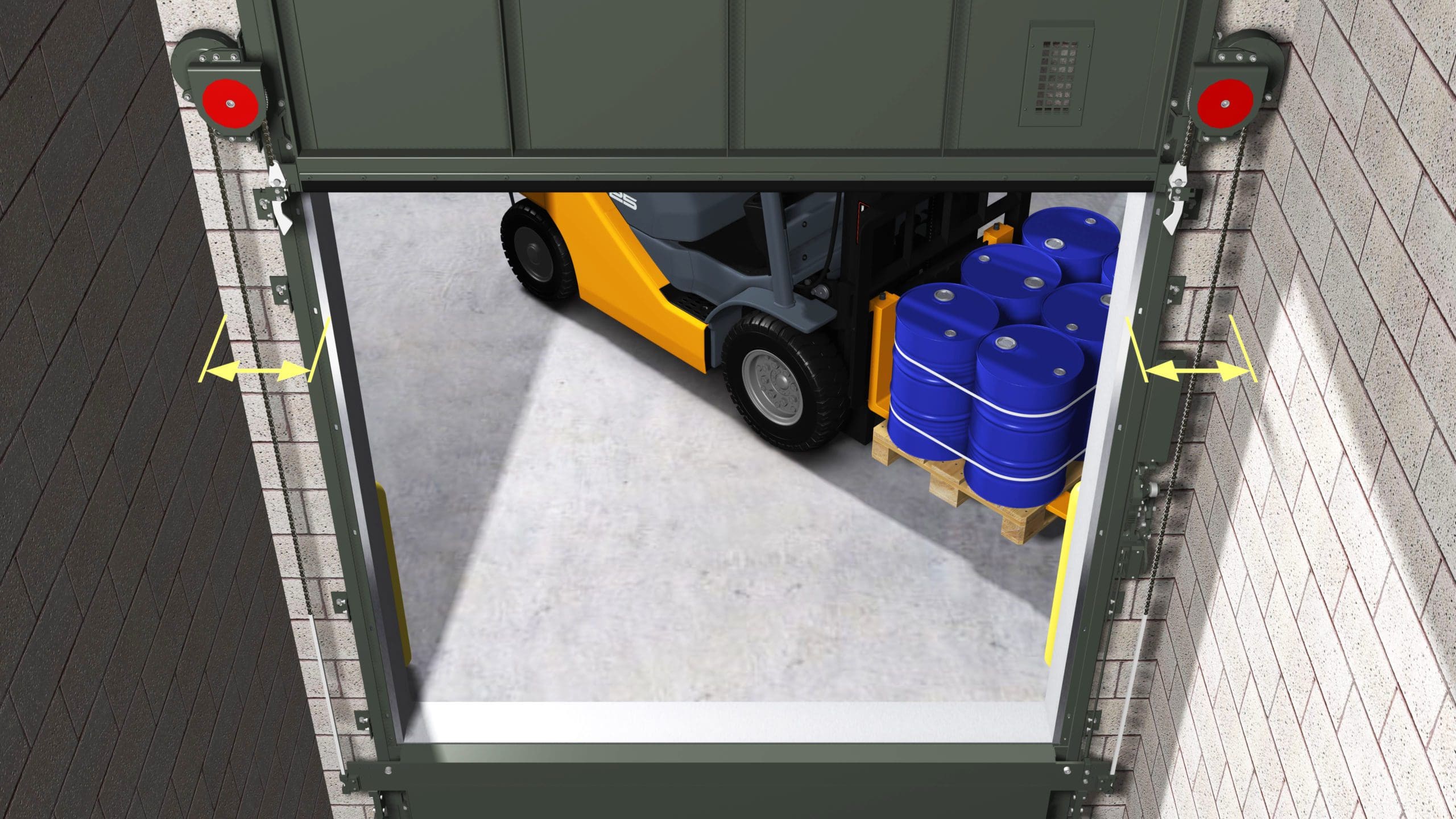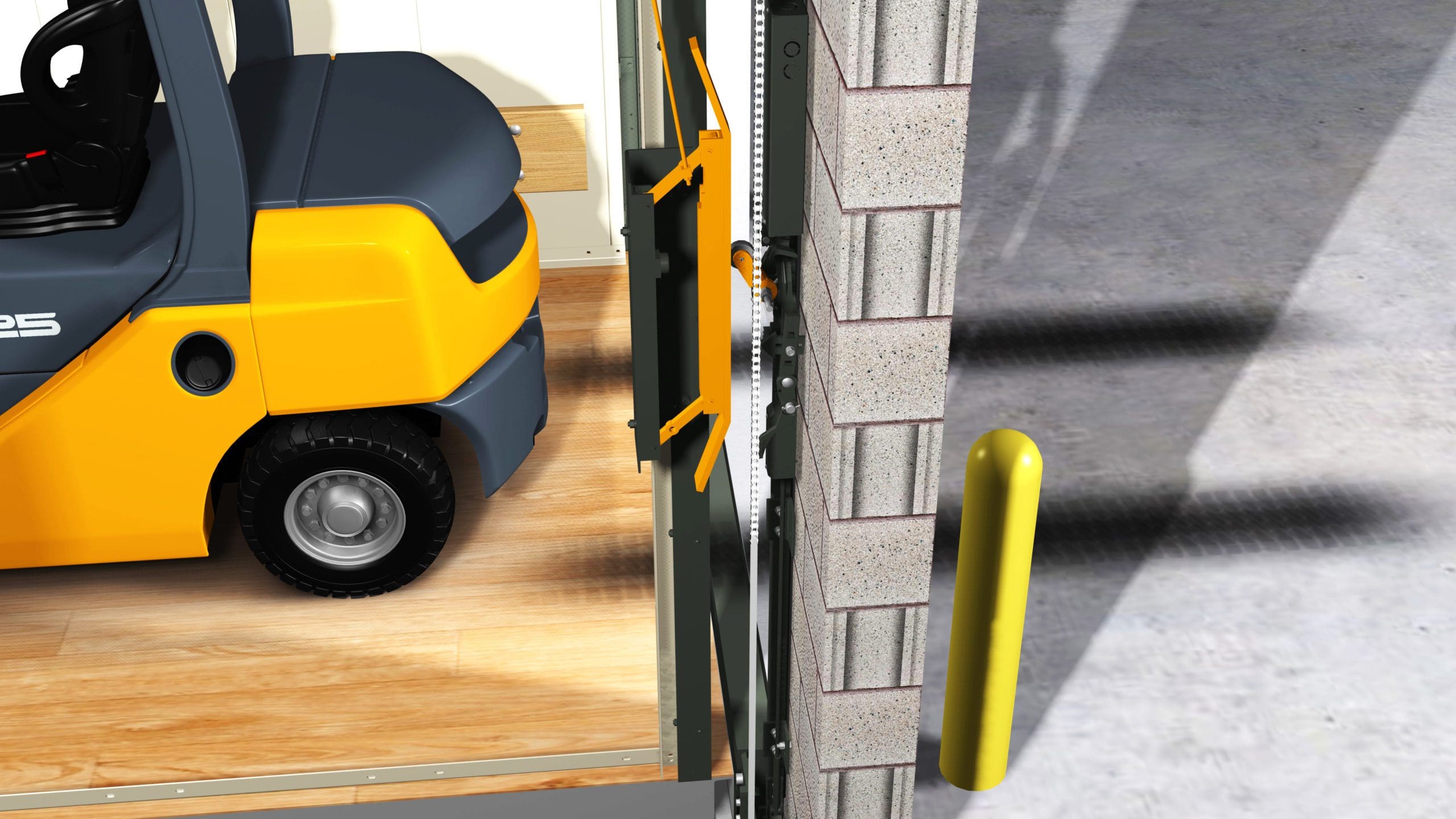Have you ever seen a passenger elevator mislabeled and disguised as a freight elevator? It happens more often than you might think. These disguises create a perception in our industry that passenger elevators with horizontal sliding doors are suitable for heavy freight loading. However, this is not the case.
What truly makes a freight elevator a freight elevator? Is it the load capacity? The size? Those factors matter, but most importantly, it’s the doors. Freight elevators equipped with proper freight doors significantly enhance their ability to outperform any passenger elevator masquerading as a freight elevator.
Here are six unique features of freight elevator doors that provide an obvious advantage over passenger doors when it comes to high volume and heavy loading:
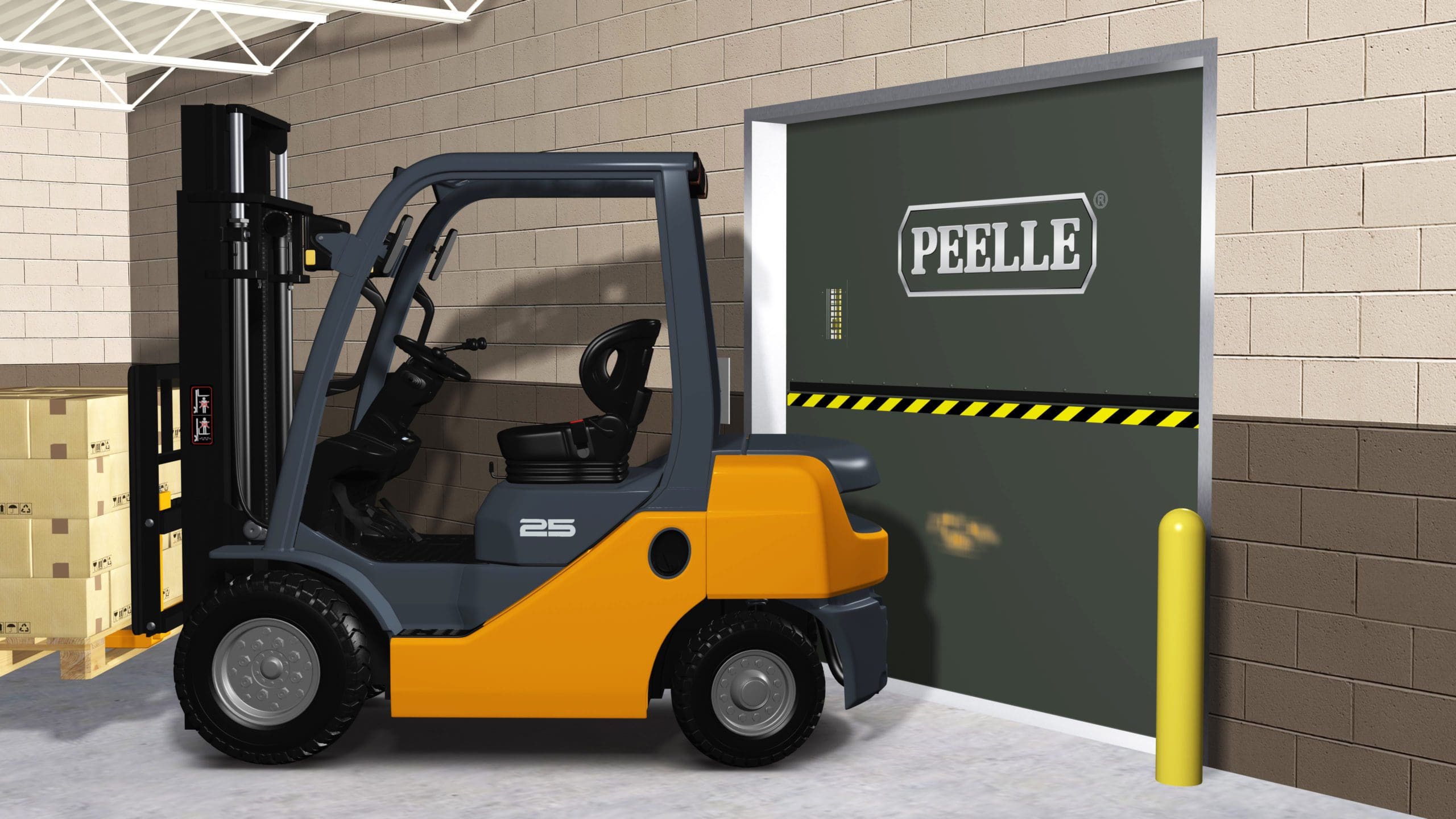
Robust Construction
Vertical sliding freight elevator doors are specifically designed for freight elevator capacity and loading methods. They are heavy-duty and reinforced to handle loads from hand trucks, pallets, and forklifts. In contrast, horizontal sliding passenger doors are primarily designed for light-duty applications, which can lead to damage from incidental impacts during loading.
Independent Locks
Vertical sliding freight elevator doors feature interlocks independent of the door panels and located away from the opening. This design protects the door guides. Horizontal sliding passenger doors, which are more susceptible to high impacts, may experience interlock misalignment, causing shutdowns.
Sequence Operation
Vertical sliding freight elevator doors only allow loading when the hoistway and car door entrances are fully open. Conversely, horizontal passenger doors can be impacted during loading if the entrance isn’t fully open, resulting in potential shutdowns.
Truckable Sills
The trucking sills of vertical sliding freight elevator doors are designed for the capacity and loading methods of the freight elevator and are flat for smooth loading. The door guides are also vertically aligned in the hoistway, preventing damage and debris accumulation. In contrast, horizontal sliding passenger door sills are prone to damage and premature wear, negatively affecting door performance.
Space Savings
Vertical sliding freight elevator doors typically require only 13 inches (330 mm) of return space, resulting in more usable space for building owners. On the other hand, horizontal passenger doors require much more return space for the panels.
Independent Operation
Vertical sliding freight elevator doors operate independently, with no mechanical coupling between the car and hoistway doors, making them ideal for heavy-duty loading conditions. In contrast, horizontal sliding passenger doors are mechanically linked, which can lead to separation during heavy loading and potential elevator shutdowns.
A recent trend shows that building owners and managers are replacing passenger and service elevators with freight elevators due to frequent damages and outages. Here are three examples:
Pirelli Plant in Silao, Mexico:
The plant has specified that its new freight elevators will be installed with Peelle freight doors for its upcoming expansion. Previously, using passenger doors was inadequate for this high-volume industrial tire manufacturer, as forklift operators transporting loads up to 11,000 lbs frequently collided with the door panels. The solution was to switch to Peelle freight elevator doors, designed to withstand regular abuse.
Farmer’s Pride in Fredericksburg, PA:
Workers using pallet jacks have damaged the passenger elevator doors by pushing the door guides out of the sill grooves, necessitating a shutdown until an elevator mechanic could be called. The solution was to replace the passenger doors with two Peelle freight elevator doors, car gates, and entrance frame assemblies.
Philip Morris USA in Richmond, VA:
This facility had a 20,000 lbs-capacity elevator with passenger doors that transported forklift trucks, damaging the hatch sills and sill supports. This resulted in numerous shutdowns due to door binding. The problem was resolved by replacing the doors with five Peelle freight elevator doors and frames, one car gate and a cab enclosure.
Vertical sliding doors are certified to meet fire protection requirements at an international level, including UL 10B, CAN S104, EN 81-58, ASME A17.1/B44, and EN 81.
Investing in vertical sliding doors offers longevity and low maintenance compared to horizontal passenger door alternatives. There is no better solution for commercial and industrial applications where passenger use is not required.
![]()

